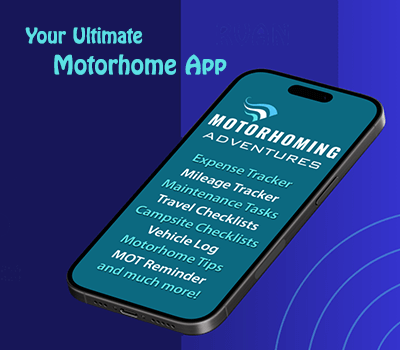Guide To Buying A Motorhome
Published: March, 2023. Updated: March, 2024.
Is owning a Motorhome for you?
The best way to find out if owning a motorhome will suit your lifestyle is to hire one.
This way, you can get a feel for driving it and setting up at campsites.
To gain a deeper insight into all that is involved in motorhome ownership you could join motorhome social media groups, like Facebook.
What type of internal layout would suit you best?
There are so many different internal configurations in motorhomes to choose from. We decided that to maintain privacy, having a bedroom at the rear and a drop down bed at the front with two sliding doors separating both areas, suited us best.
What added weight in the vehicle will you want to carry?
This is probably the most important consideration when buying a motorhome as there are different legal weight limits on vehicles. The payload of the vehicle is the additional weight you can legally carry in the vehicle. We chose a motorhome with a strengthened chassis which gave us a greater payload.
This has meant that we have been able to fill our motorhome garage with two bicycles, tools, chairs, a table, an inflatable kayak and much more without being overloaded.
Please check the payload of the motorhome you intend to buy as sometimes there is very little extra weight you can carry on top of the weight of an unloaded vehicle.
You may like our YouTube film about Motorhome Payload.
Do you have the correct licence for the type of vehicle you want to buy?
Check the licence requirements for the weight of the vehicle.
In the UK, the standard weight limits for driving with a regular Category B (car) licence are up to 3,500 kilograms (3.5 tonnes). Beyond this weight, a C1 licence becomes necessary.
The one exception to having to get a C1 licence is for drivers who passed their driving tests before 1 January 1997, as licences issued before then had a C1 entitlement already included. However, this isn’t a lifelong entitlement: to keep the C1 licence after 70 years of age, drivers in this category must pass a medical and vision assessment (known as a D4).
Where should you look to buy a Motorhome?
Search for Approved Dealers. Obtain a history check if buying from a private seller an auction or online. If buying online, be aware of potential scams. Ensure you get a HPI check. Furthermore, develop a good relationship with the seller so all of your questions are answered.
What should I look for when inspecting the vehicle?
Physically look for external and interior faults.
Walk around the motorhome and check for any dents or damage to the body.
Check the windows and doors to make sure they can be locked properly.
Look for any mismatched paintwork (this might be a sign of a botched repair job).
Look for evidence of DIY modifications (these can nullify insurance if not declared).
Check the tyres and tyre walls.
Check the exhaust for any signs of damage.
Check that everything works including the cooker, hob, fridge, freezer, pumps, solar, etc. Make sure you have the instruction manuals for built-in appliances.
Check for any strange smells or odours as these can be a sign of damp.
Check under seats and in cupboards for mould.
Check for delamination by walking across the floor to see if there are soft patches.
Check the bathroom for mould, damp, or any areas that have not been properly sealed.
Will you be able to afford ownership of a Motorhome?
Work out the costs of insurance, servicing and maintenance etc.
Research the costs of fuel for the type of journeys you intend to make and the cost of campsites.
Many of our YouTube films contain information on the costs involved in ownership and travelling.

